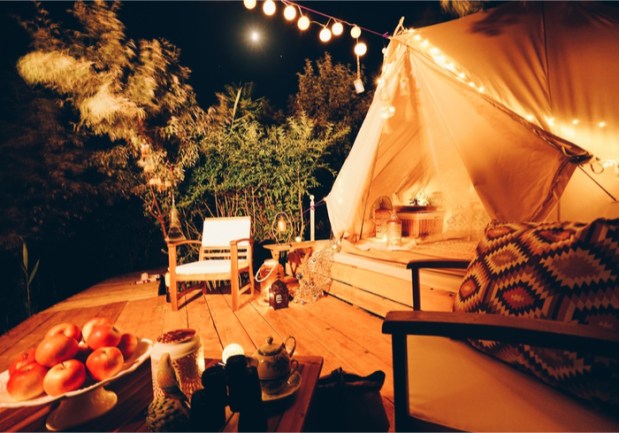Glamping Goes Worldwide With Marketplaces

Property owners offering unique lodging options such as treehouses, yurts, safari tents and beach casitas have a challenge: how can they get the word out about their properties? Traditional home share sites such as Airbnb and VRBO have a variety of properties, but they often focus on houses and apartments. Marketplaces such as Glamping Hub, on the other hand, focus on the types of properties that let city dwellers escape metropolis and connect with nature in a camping-like experience with all the types of amenities that they might expect.
Marketplaces such as Glamping Hub see that glamping is popular with two segments in particular: baby boomers and millennials. Baby boomers have disposable income, time and a desire for something more. “They’ve done it all in a way and they’re looking for new adventure,” Glamping Hub Co-founder Ruben Martinez told PYMNTS.com in an interview. “They’ve got the money to spend and they can head to some of these higher-end luxury retreats.” Another segment, millennials, are looking for unique destinations that can lend themselves to Instagram and other social media channels.
The Great Outdoors
Overall, the main driving factor is that consumers can pretty much get everything they want out of traditional camping — direct access to fly-fishing, mountain biking, river rafting — but they don’t have to rough it by sleeping on the floor or eating hot dogs. In essence, consumers can get the best elements of traditional camping and leave the less glamorous aspects of the experience. Properties sites such as Glamping Hub run the gamut from a host’s investment property with one or two units to larger companies that might have multiple glamping sites. Either way, hosts can get very creative. Glamping Hub, for example, has one property listing of a yurt outside of Barcelona, Spain. The property is run by a couple whose dream was to start a winery, so the yurt is located on a vineyard.
For property owners, glamping accommodations come with some advantages over traditional properties such as hotel. For one, it can be expensive to put up a brick-and-mortar building. By comparison, the investment is small for a tiny home or safari tent, which can be a fraction of the cost. At the same time, however, these types of accommodation can bring in decent revenue. “The price per night is still significant enough to where they can make their returns quicker with a fraction of the investment,” Martinez said.
Both parties interact through a marketplace, which Martinez said is most similar to Airbnb. Hosts and guests can message back and forth and consumers can search for properties with a bunch of different filters. The difference between sites such as Airbnb and Glamping Hub, though, is that they cater to a different type of consumer. This group isn’t looking for apartment and condos; they are looking for outdoorsy accommodations. And interest in such accommodations spans the globe: Martinez said that during a global glamping summit in April, people came from 15 countries to attend.
The Road Ahead
Overall, glamping is becoming a more common lodging experience for travelers: “Even five or six years ago, glamping was a niche industry but now it is almost a mainstream holiday option,” Cool Camping’s founder Jonathan Knight told The Telegraph. The company found that glamping bookings rose 50 percent between the first three months of this year and last. And according to research by Family Break Finder, 50 percent of respondents said they planned to stay in a holiday park or local campsite next year. And approximately a third of respondents wanted to try glamping.
John Romfo, chief operating officer for GLAMPING.COM, said in a press release last year that “what started as a trend has evolved into a full-blown phenomenon.” Romfo reported that “consumer inquiries visiting GLAMPING.COM is up over 100 percent.” And, going forward, Martinez of Glamping Hub thinks that glamping will continue to innovate. “I think we’re just barley scratching the surface,” Martinez added. The only limitations, it seems, is the creativity of people — what property owners may create for those that want to try glamping around the world.
